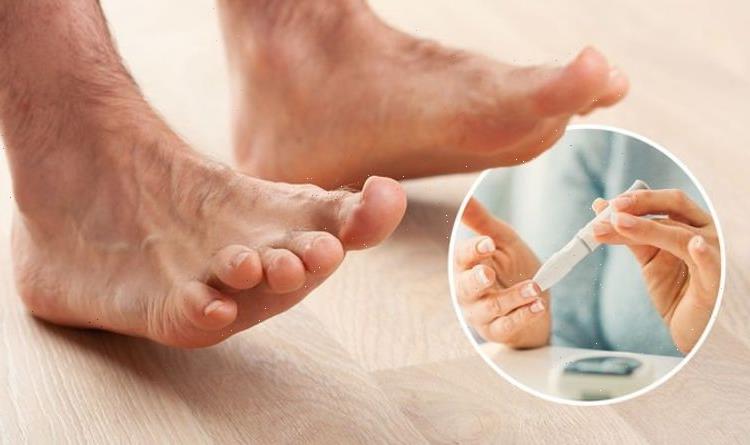Type 2 diabetes can be a 'devastating diagnosis' says expert
We use your sign-up to provide content in ways you’ve consented to and to improve our understanding of you. This may include adverts from us and 3rd parties based on our understanding. You can unsubscribe at any time. More info
Type 2 diabetes – a heart disease precursor – is the result of a dysfunction in the way the body processes insulin – a hormone secreted by the pancreas. Insulin is responsible for regulating blood sugar levels, which supply the cells with energy among other things. However, if left unregulated, consistently high blood sugar levels can cause an avalanche of problems in the body.
Some of the most acute warning signs of blood sugar damage can be obscured in relation to the nerves.
Nerve damage caused by high blood sugar levels is medically referred to as diabetic neuropathy.
Diabetic neuropathy most often damages nerves in your legs and feet; a telltale sign of which can be observed on your toes, according to Doctor Prash Vas, Consultant in Diabetes and Diabetes Food Medicine at London Bridge Hospital (part of HCA UK).
Clawing of toes can signal advanced nerve damage, warned Doctor Prash.

Claw toe is a condition characterised by the toes bending into a shape similar to a claw.
Other telltale signs of blood sugar damage in feet include:
- Wasting of the small muscles in the feet
- Build-up of skin over pressure points of the sole
- Some individuals may experience balance issues.
“Nerve damage may also cause severe pain, burning or throbbing in character which is typically worse at night,” warned Doctor Prash.
Other related warning signs
Doctor Prash explained: “Pain in the lower legs on walking short distances is a hallmark sign of blood vessel damage which doctors often refer to as ‘claudication’.”
DON’T MISS
Liver disease: Popular drug taken could increase your risk [ADVICE]
High blood pressure: The fruit that can raise your risk [TIPS]
Magnesium deficiency: Major signs to spot [INSIGHT]
However, as he noted, in those with significant diabetes related nerve damage, this warning symptom of blood vessel damage is often missing, and individuals often present simply with signs of early gangrene.
“The foot skin is often thin and lacking hair,” added Doctor Prash.
According to Doctor Prash, “presence of nerve and blood vessel damage, either individually or together, can lead to the development of diabetic foot ulcers – perhaps the most dreaded complication”.
“Without swift treatment, there is a risk of infection, persistence of the ulcer and the possibility of an amputation.”

Foot checks
Your foot check is part of your annual review, which means you should have it as part of your diabetes care and it’s free on the NHS.
“This is because you’re more likely to have serious foot problems and these can lead to amputations,” explains Diabetes UK.
According to the health body, if you develop a problem with your feet, it’s really important to speak to your care team right away – don’t delay.

In most cases, serious foot problems can be prevented.
As Diabetes UK noted, you can do this by checking your feet yourself every day, and having a foot check at least once a year that’s arranged by your GP practice.
“Everyone with diabetes should have an annual foot check, so make sure you get yours – even if you’ve been referred to a foot specialist or clinic,” explains the health body.
“They will check your feet but also tell you your level of risk of foot problems.”
Source: Read Full Article
